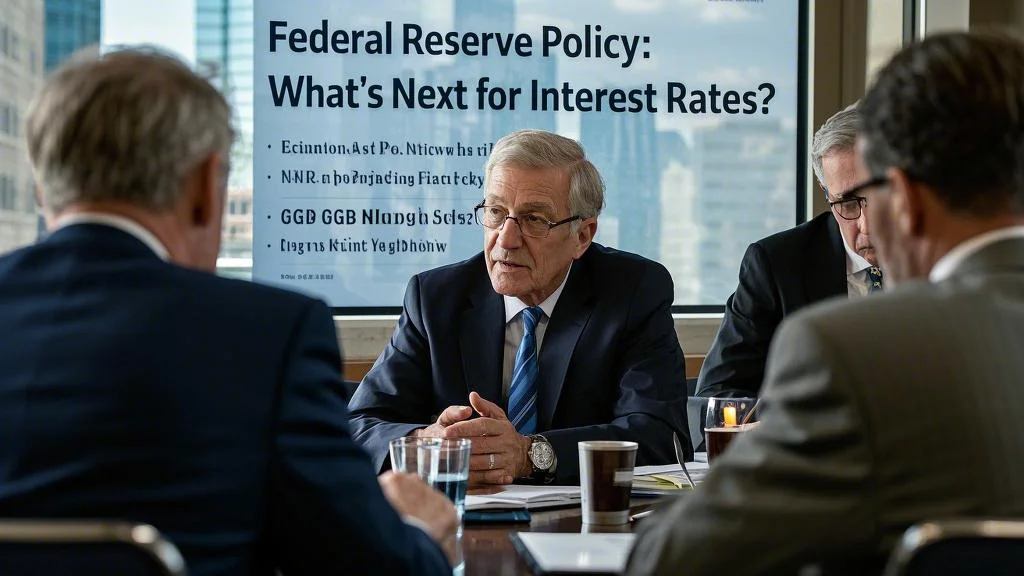Federal Reserve Policy: What’s Next for Interest Rates?

Understanding the Federal Reserve’s Role in Shaping the Economy
The Federal Reserve plays a pivotal role in shaping the U.S. economy through its monetary policy decisions. As the central bank of the United States, the Fed is responsible for managing inflation, maximizing employment, and stabilizing financial markets. One of its primary tools is adjusting the federal funds rate, which influences borrowing costs across the economy. When inflation rises, the Fed often implements interest rate hikes to cool down economic activity and curb price increases. Conversely, during economic downturns, the Fed may lower rates to stimulate growth. Understanding the Fed’s dual mandate and its policy decisions is crucial for investors, as these actions have far-reaching implications for financial markets, consumer spending, and business investment. By staying informed about Federal Reserve policy, you can better anticipate market movements and adjust your investment strategy accordingly.
The Impact of Interest Rate Hikes on the Economy
Interest rate hikes are one of the most powerful tools the Federal Reserve uses to manage inflation, but they also have significant consequences for the broader economy. Higher interest rates increase borrowing costs for consumers and businesses, which can slow down spending and investment. For example, mortgages and auto loans become more expensive, potentially reducing demand in the housing and automotive sectors. Similarly, businesses may delay expansion plans or cut back on hiring due to higher financing costs. On the flip side, savers benefit from higher yields on savings accounts and fixed-income investments. For investors, understanding the ripple effects of interest rate hikes is essential for navigating sectors that may be negatively impacted, such as real estate and consumer discretionary, while identifying opportunities in sectors like financials that tend to benefit from higher rates.
How Inflation Influences Federal Reserve Policy Decisions
Inflation is a key driver of Federal Reserve policy, as the central bank aims to maintain price stability while supporting economic growth. When inflation rises above the Fed’s target of 2%, policymakers often respond with interest rate hikes to reduce demand and slow price increases. However, the relationship between inflation and interest rates is complex. Persistent inflation can erode purchasing power and create uncertainty, while aggressive rate hikes risk triggering a recession. For investors, understanding the inflation impact on investments is critical. Inflation tends to favor tangible assets like real estate and commodities, while fixed-income investments like bonds may underperform. By monitoring inflation trends and Fed policy, investors can adjust their portfolios to mitigate risks and capitalize on opportunities in an inflationary environment.

Stock Market Forecast: Navigating Fed Policy and Economic Uncertainty
The stock market forecast is heavily influenced by Federal Reserve policy, particularly when it comes to interest rate decisions. Higher interest rates can weigh on equity valuations, as borrowing costs rise and corporate earnings may decline. Growth stocks, which rely on future earnings, are often hit hardest during periods of rising rates. Conversely, value stocks and dividend-paying companies in sectors like utilities and consumer staples tend to perform better. Additionally, market volatility often increases as investors react to Fed announcements and economic data. By staying informed about the stock market forecast and understanding how Fed policy impacts different sectors, investors can make more informed decisions and position their portfolios for long-term success.
GDP Growth Outlook: Balancing Inflation and Economic Expansion
The GDP growth outlook is another critical factor influenced by Federal Reserve policy. When the economy is growing too quickly, inflation can rise, prompting the Fed to implement interest rate hikes to cool down activity. However, if rates rise too quickly or too high, they risk stifling economic growth and triggering a recession. On the other hand, if the Fed keeps rates too low for too long, it risks allowing inflation to spiral out of control. For investors, understanding the delicate balance between inflation and growth is essential. A strong GDP growth outlook can signal opportunities in cyclical sectors like technology and industrials, while slowing growth may favor defensive sectors like healthcare and utilities. By monitoring GDP trends and Fed policy, investors can align their strategies with the broader economic environment.
Strategies for Investors in a Rising Rate Environment
As the Federal Reserve continues to navigate inflation and economic growth, investors must adapt their strategies to a rising rate environment. One approach is to focus on sectors that benefit from higher interest rates, such as financials, which can earn more on loans and investments. Another strategy is to prioritize high-quality companies with strong balance sheets and consistent cash flow, as these are better equipped to handle higher borrowing costs. Fixed-income investors may consider shorter-duration bonds, which are less sensitive to interest rate changes, or inflation-protected securities like TIPS. Additionally, diversifying across asset classes, including real estate and commodities, can help mitigate risks associated with rising rates. By understanding the implications of Federal Reserve policy and adjusting your portfolio accordingly, you can navigate a rising rate environment with confidence.
Conclusion: Preparing for the Future of Fed Policy and Interest Rates
The Federal Reserve plays a critical role in shaping the economic landscape, and its decisions on interest rate hikes have far-reaching implications for investors. By understanding the inflation impact on investments, staying informed about the stock market forecast, and monitoring the GDP growth outlook, you can make informed decisions and adjust your investment strategy to align with the broader economic environment. While rising interest rates present challenges, they also create opportunities for savvy investors to capitalize on sectors that benefit from higher rates and build a resilient portfolio. By staying proactive and adaptable, you can navigate the complexities of Fed policy and position yourself for long-term success in an ever-changing economic landscape.